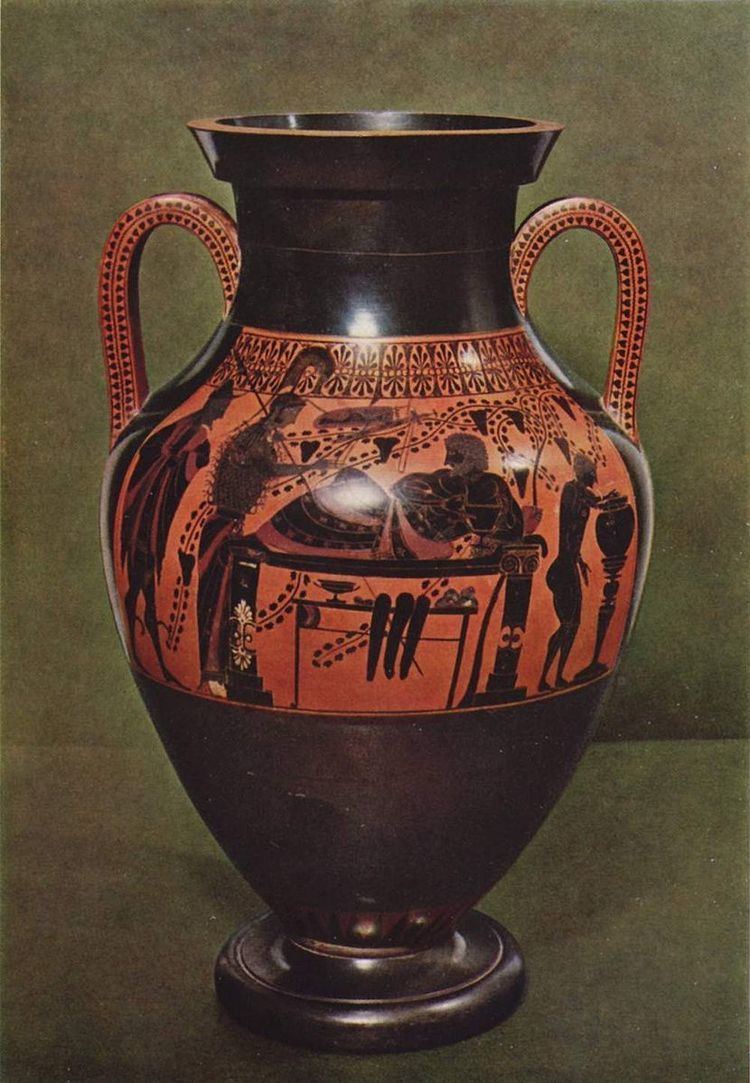 | ||
The Lysippides Painter was an Attic vase painter in the black-figure style. He was active around 530 to 510 BC. His real name is not known.
Contents
Life and work
His conventional name is derived from a kalos inscription on a neck amphora in the British Museum (B 211). He is considered the most significant pupil of Exekias, from whom he adopted not only his artistic style but also some important motifs, such as Ajax and Achilleus playing a board game. He also frequently painted scenes involving the hero Herakles. In total, about 30 known vases are ascribed to him.
His collaboration with the Andokides Painter, usually considered the inventor of red-figure vase painting is unusual. On seven bilingual vases, six belly amphorae and a cup (now in Palermo), he painted the red-figure side, while the Andokides Painter was responsible for the black-figure one. At times, the subjects painted by both are identical. It remains disputed amongst scholars whether both painters are identical and merely represent one artist using both techniques. Already John Beazley saw them as separate artists, an argument later developed by Beth Cohen and Heide Mommsen. The identity of the two painters is supported by Konrad Schauenburg, Herbert Marwitz and John Boardman. Martin Robinson and others remained undecided.
Style
The Lysippides Painter's works consisted of many neck-amphorae that were based on the works of Exekias, his mentor. Lysippides' works however, were simplified compared to those of Exekias. This style actually became very popular in the Archaic Period. Especially showing in the late 6th century and early 5th as his neck-amphorae stand on the front lines of a series of vases. Many of his works were extremely similar to Exekias. A vase in Detroit depicts the mythical Greek hero, Herakles wrestling a lion. This depiction takes after a neck-amphorae version done by Exekias in multiple ways. While there is no saying that Lysippides is the painter, the vase is grouped with his work stylistically in the way it takes after Exekias and that the work narrows all the attention on Herakles' role in the battle rather than the lion's. These elements are strongly associated with the work of the Lysippides Painter. Like most artists during this time, his work contained many religious references of Greek gods and goddesses in his work. Herakles being one of the more popular.
bilingual belly amphorae, painted in collaboration with the Andokides Painter
Front and back: Achilles and Ajax playing a board game
